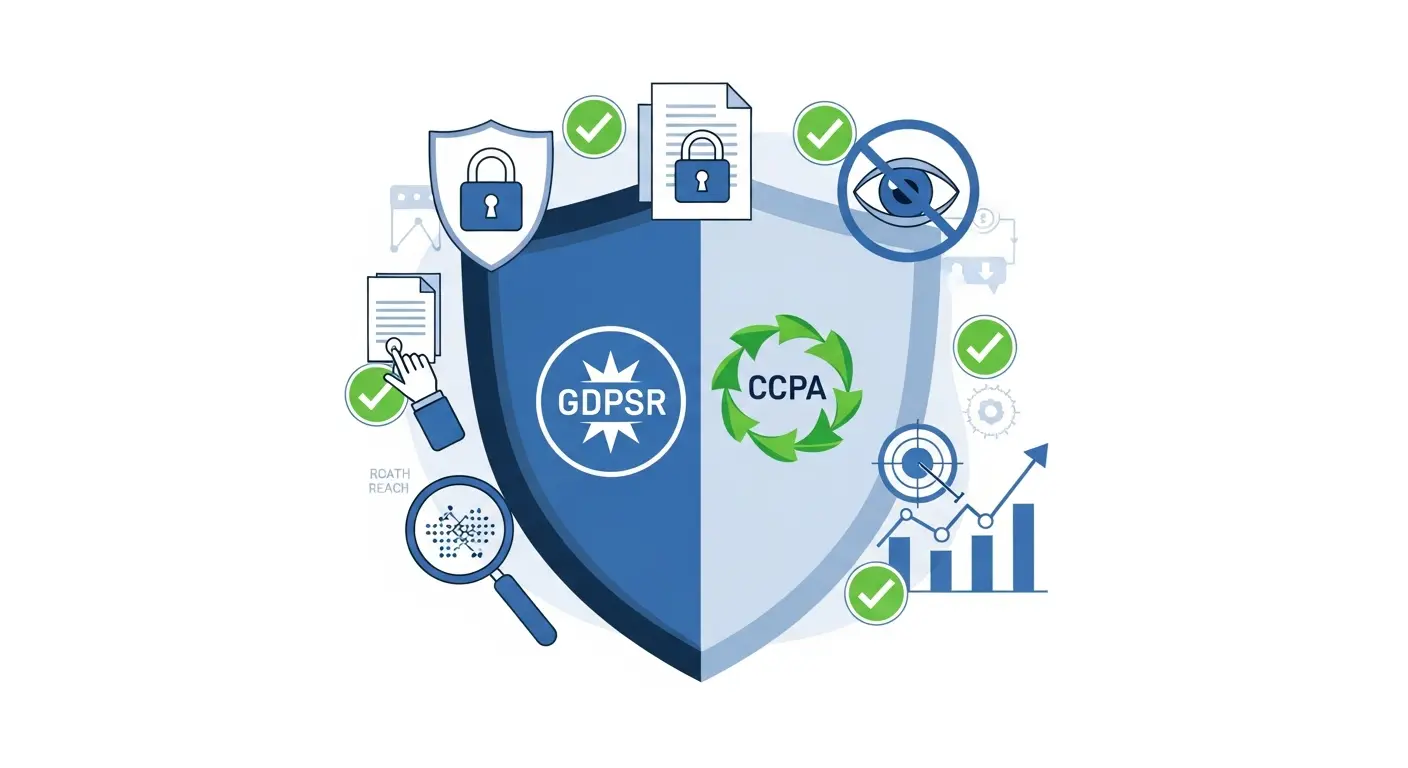Blockchain in Advertising: Transparency and Future Applications
The digital advertising ecosystem is a marvel of modern technology, a sprawling, high-speed marketplace that connects advertisers with audiences in milliseconds. Yet, for all its sophistication, it suffers from a fundamental problem: a staggering lack of transparency. As a publisher, you create valuable content and cultivate an audience, but the journey of an advertiser's dollar to your bank account is often a long and murky one, diminished by hidden fees, fraud, and inefficiencies. This complex supply chain, often referred to as the "ad tech tax," can consume upwards of 50% of an ad budget before it ever reaches you. But what if there was a way to bring radical transparency to this process, to verify every transaction, eliminate fraud, and ensure you receive your fair share? This is the promise of blockchain technology, a decentralized and immutable ledger poised to rewrite the rules of digital advertising.
This comprehensive guide will demystify blockchain's role in advertising. We'll explore the deep-seated problems it aims to solve, break down the core technology, and provide actionable strategies for you, the publisher, to prepare for this transformative shift. Our focus will be on maximizing your revenue by understanding how transparency, fraud prevention, and decentralized networks can work in your favor.
The Opaque Reality of the Modern Ad Tech Supply Chain
Before we can appreciate the solution, we must fully grasp the problem. The programmatic advertising landscape, while powerful, is notoriously convoluted. An advertiser's budget passes through multiple intermediaries—DSPs, ad exchanges, SSPs, and data management platforms—each taking a cut. For publishers, this complexity manifests in several critical pain points.
1. The "Ad Tech Tax" and Value Erosion: Studies have consistently shown the significant value leakage within the programmatic supply chain. The Interactive Advertising Bureau (IAB) has reported that only about 51% of advertiser spend actually reaches the publisher. The rest is absorbed by a tangled web of platform fees, data costs, and other charges. Without a clear, unified ledger of transactions, it's nearly impossible for a publisher to audit this chain and understand where the value is being lost. You're left trusting opaque reporting from multiple vendors, with little recourse to verify the numbers.
2. Rampant and Evolving Ad Fraud: Ad fraud is a multi-billion dollar drain on the industry, and publishers often bear the brunt of its consequences, either through clawbacks or damage to their reputation. Key types of fraud include:
- Bot Traffic: Non-human traffic designed to generate fraudulent impressions and clicks.
- Domain Spoofing: Fraudsters misrepresenting a low-quality site as a premium publisher's domain to trick advertisers into paying higher CPMs.
- Ad Stacking: Layering multiple ads on top of each other in a single ad slot, where only the top ad is visible, but impressions are counted for all.
- Pixel Stuffing: Stuffing a 1x1 pixel with an ad, making it invisible to the user but still registering an impression.
These fraudulent activities devalue legitimate inventory and erode advertiser trust, ultimately pushing down the CPMs you can command for your high-quality traffic.
3. Data Privacy and Consent Challenges: The ground is constantly shifting under our feet with regulations like GDPR and CCPA. Navigating these complex privacy regulations is a significant challenge. The current system relies on third-party cookies and centralized data silos, making it difficult to manage and honor user consent preferences across the entire ecosystem. This lack of a unified, trustworthy consent mechanism creates legal risks and operational headaches for publishers.
Enter Blockchain: A Primer for Publishers
At its core, a blockchain is a distributed, immutable digital ledger. Instead of one company (like Google or your SSP) holding the master record book, a copy of the record book is shared among many participants in a network. Let's break down the key characteristics that make it so powerful for advertising.
Decentralization: There is no central authority or single point of failure. The network is maintained by its participants, making it more resilient and resistant to manipulation by any single entity. This is a direct challenge to the "walled garden" approach of today's tech giants, promising a more open and equitable marketplace.
Immutability: Once a transaction (like an ad impression or a payment) is recorded on the blockchain, it is cryptographically sealed and cannot be altered or deleted. This creates a permanent, unchangeable audit trail that everyone on the network can trust. Imagine being able to see an un-editable history of every impression served on your site.
Transparency: While maintaining privacy, blockchains offer unprecedented transparency. Authorized participants in the network can view the ledger of transactions. For publishers, this means you could potentially see the entire lifecycle of an ad impression—from the advertiser's initial bid to the final payment clearing in your account, including every fee taken along the way.
Smart Contracts: These are perhaps the most revolutionary component for ad tech. A smart contract is a self-executing contract with the terms of the agreement written directly into code. They run on the blockchain and automatically execute when specific conditions are met. For example, a smart contract could be programmed to automatically release payment to a publisher the instant a valid, viewable ad impression is verified on the network. This eliminates lengthy payment cycles, disputes, and the need for manual reconciliation.
How Blockchain Revolutionizes the Advertising Supply Chain
By applying these core principles, blockchain technology can directly address the industry's most pressing issues and create a more efficient, fair, and profitable environment for publishers.
1. Eradicating Supply Chain Opacity: A blockchain-based advertising network creates a "single source of truth." When an advertiser launches a campaign, the terms are encoded in a smart contract. As their ad is served on your site, every event—the bid, the win, the impression, the click, the viewability metric—is recorded as a transaction on the shared ledger.
As a publisher, you would have access to this ledger. You could see precisely what the advertiser paid, which intermediaries were involved, and the exact fee each one took. This end-to-end visibility turns the "ad tech tax" from an unknown black box into a transparent, auditable line item. This newfound clarity empowers you to make better decisions about your ad tech partners and negotiate more favorable terms, ultimately increasing your take-home revenue.
2. Combating Ad Fraud with Verifiable Data: Blockchain’s immutable nature is a powerful weapon against fraud. By creating a cryptographic signature for each legitimate participant (publishers, advertisers, users), the network can effectively weed out bad actors.
- Preventing Domain Spoofing: Your domain would be registered on the blockchain, creating a verifiable and untamperable identity. Any attempt to spoof your domain would be immediately identifiable as fraudulent because it wouldn't match the blockchain record.
- Eliminating Bot Traffic: While not a complete panacea, blockchain can drastically reduce bot traffic. By creating decentralized user IDs, the system can better verify human engagement. Furthermore, every impression is logged. A pattern of millions of impressions originating from a single IP address in a short time would be permanently recorded on the chain, making it easy to identify and blacklist the fraudulent source. High-value formats like video ads, which are prime targets for fraud, stand to benefit immensely from this level of verification.
3. Streamlining Payments and Reconciliation: For many publishers, the finance department's monthly reconciliation process is a nightmare of conflicting reports and delayed payments. Smart contracts automate this entire workflow.
Imagine this scenario: A smart contract is created with the rule, "If a user from a target geography spends at least 15 seconds on a page where a verified ad is 75% in view, release 70% of the winning CPM bid to the publisher's wallet." This entire process is automated. The conditions are verified by trusted "oracles" (data feeds that connect the blockchain to the real world), and payment is transferred instantly. This eliminates 30, 60, or 90-day payment cycles, improving your cash flow and dramatically reducing administrative overhead.
4. Empowering Users with Data Control: Blockchain enables the creation of self-sovereign identity, where users control their own data. A user could manage their preferences and grant or revoke consent for their data to be used for advertising purposes directly on the blockchain. This consent is cryptographically signed and immutable. For publishers, this creates a clear, auditable trail of user consent, significantly reducing compliance risks associated with privacy regulations and building greater trust with your audience.
Technical Implementation: Moving from Theory to Practice
So, how would this actually work? A full-scale advertising blockchain is not a single product but an ecosystem of technologies working together. It wouldn't necessarily replace everything overnight but would rather integrate with and enhance existing systems.
Consortium Blockchains: Most experts agree that advertising will run on "permissioned" or "consortium" blockchains, not fully public ones like Bitcoin. In this model, a group of trusted entities (e.g., IAB, major agency holding companies, trusted publishers, ad tech vendors) would govern the network and validate transactions. This provides the necessary speed, scalability, and control for an industrial-scale application.
Integration with Existing Stacks: A blockchain layer could be integrated into the programmatic stack you already use. For example, your header bidding wrapper could be modified to log bid data to a blockchain. When an ad wins, the impression and payment data are passed to the chain for verification and settlement via a smart contract. Similarly, for mobile publishers focused on app monetization, blockchain could offer a transparent alternative or complement to traditional ad mediation platforms, ensuring every impression is accounted for across multiple networks.
Real-World Projects: While the technology is still nascent, several projects are pioneering this space. Brave browser with its Basic Attention Token (BAT) is a consumer-facing example that rewards users for viewing ads. On the B2B side, companies are developing protocols and platforms to create transparent media supply chains. These early movers are building the infrastructure that will eventually support a more mainstream shift.
Best Practices for Publishers: Preparing for a Blockchain-Powered Future
The full-scale adoption of blockchain in advertising is still on the horizon, but the shift is beginning. Proactive publishers who prepare now will be best positioned to reap the rewards.
1. Double Down on First-Party Data and Analytics: Regardless of the underlying technology, a deep understanding of your audience is your most valuable asset. A robust first-party data strategy will be crucial. Use analytics to understand user behavior, segment your audience, and demonstrate the value of your inventory to advertisers. A blockchain can verify delivery, but you still need to prove the quality of the audience you're delivering to. Our analytics guide provides a great starting point for building a data-driven culture.
2. Prioritize Quality and User Experience: In a transparent world, quality shines. Advertisers will be able to see exactly where their ads are running and how they are performing. Cluttered sites with intrusive ads and poor engagement metrics will be easily identified and devalued. Focus on creating a premium user experience. This includes optimizing your site speed, creating high-quality content, and implementing a clean, effective ad layout. Tools for ad layout optimization can help you balance revenue with user experience, ensuring your site remains a high-value destination.
3. Vet Your Technology Partners: Start asking your SSPs, ad exchanges, and other partners about their roadmap for transparency. Are they exploring blockchain solutions? Do they participate in initiatives like ads.txt and sellers.json? Partners who are already committed to transparency are more likely to be leaders in the transition to blockchain-based systems. A partner that already excels in transparent header bidding solutions is likely a good bet for the future.
4. Educate Yourself and Your Team: The biggest barrier to adoption is often a lack of understanding. Invest time in learning the fundamentals of blockchain and how it applies to digital media. Encourage your ad ops, sales, and finance teams to do the same. The more your organization understands the potential, the better you'll be able to identify opportunities and avoid pitfalls.
5. Consider Pilot Programs: As the technology matures, be open to experimenting. You might partner with a blockchain-based ad network to run a small pilot program on a portion of your inventory. This allows you to test the waters, understand the implementation process, and gather data on performance without disrupting your entire revenue stream. This is especially relevant for high-stakes inventory like your premium video ads inventory.
Common Mistakes to Avoid on the Path to Adoption
As with any emerging technology, there's a lot of hype. Navigating it requires a healthy dose of realism.
- Mistake #1: Believing Blockchain is a Silver Bullet: Blockchain is a powerful tool for transparency and verification, but it doesn't solve every problem. It won't create better ad creative, and it won't magically increase your audience. It's a foundational layer of trust, not a replacement for a sound business strategy.
- Mistake #2: Ignoring Scalability and Cost: Early blockchain networks can be slow and computationally expensive. The programmatic advertising industry operates at a massive scale, processing trillions of transactions. Any viable blockchain solution must be able to handle this volume efficiently and cost-effectively. Be skeptical of solutions that cannot clearly articulate their plan for scaling.
- Mistake #3: Jumping in Without a Clear Business Case: Don't adopt blockchain just because it's a buzzword. Evaluate any potential solution based on its ability to solve a real problem for your business. Will it demonstrably reduce fraud? Will it increase your revenue share? Will it lower your administrative costs? If the answer isn't a clear "yes," it may be too early to invest.
- Mistake #4: Underestimating the Need for Collaboration: Blockchain is a network technology. Its value increases exponentially as more participants join. A successful advertising blockchain will require broad industry collaboration among publishers, advertisers, agencies, and tech vendors. Be wary of proprietary, closed solutions that seek to create a new walled garden using blockchain terminology.
The Transparent Future is Coming
The transition to a blockchain-powered advertising ecosystem will not happen overnight. It will be a gradual evolution, much like the shift to programmatic itself. However, the fundamental drivers—the demand for transparency, the need to combat fraud, and the imperative for efficiency—are undeniable. For publishers, this shift represents a monumental opportunity to reclaim control, restore trust, and capture a fairer share of the value they create.
By focusing on quality, building a strong data foundation with a clear understanding from your analytics guide, and strategically engaging with forward-thinking partners, you can prepare for a future where every ad impression is verifiable, every transaction is transparent, and every payment is guaranteed. The murky, inefficient supply chain of today will give way to a trusted, efficient marketplace of tomorrow, and the publishers who are prepared will be the ones who thrive.
Ready to build a more transparent and profitable future for your ad revenue? The first step is to optimize your current stack to maximize its potential. The team at our company is dedicated to helping publishers navigate the complexities of modern ad tech. If you have questions about how to improve your current setup or prepare for future trends, please contact our team. We invite you to book a demo to see our technology in action, or explore our solutions to learn more about how we can help you grow.



